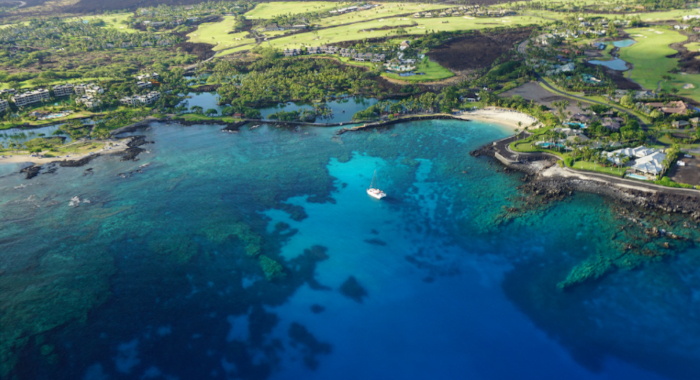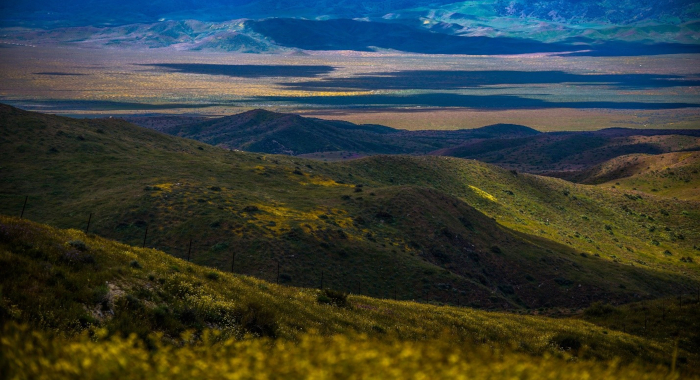There are many and increasing threats to biodiversity. To protect the plants and animals that share our world, we need to understand what they need to survive – and ideally, thrive – in a warming, more crowded world. And we need to better understand how meeting those needs can align with other societal values.
To do that, our scientists conduct ecological research to elucidate conservation problems, test hypotheses and solutions, and monitor results. We collaborate with the scientific community to inform and review our work, and share our findings with scientists and conservation practitioners around the world.


Scott A. Aalbers, Michael Wang, Lyall Bellquist, Kate Kauer, Alexis Jackson, Chugey A. Sepulveda
An emerging recreational fishery for swordfish has recently developed in California, outpacing existing fisheries monitoring programs, which prevents accurate estimation of swordfish catch and effort…Kristina Kreter, Shona Ganguly, Rowan Roderick-Jones, and Kelsey Jessup
New strategies to address urban runoff management with nature-based approaches offer promising solutions to alleviating climate change impacts—like urban heat, water shortages, and…Mario Zuliani, Nargol Ghazian, Malory Owen, Michael F. Westphal, H. Scott Butterfield, Christopher J. Lortie
As The Nature Conservancy embarks on restoration planning for its Strategic Restoration Strategy, it needs detailed information on the importance of shrubs to a suite of conservation targets,…The Nature Conservancy, radbridge, Earth Economics
FEMA increasingly recognizes and emphasizes the role of nature-based solutions (NBS) for building community resilience to hazards like flood, wildfire, and drought, and the agency has made remarkable…Butterfield, H.S., J. Howard, Z. Principe, E. Inlander, S. Sweet, A. Craig, R. Mason, J. Knapp , M. Katkowski
For over 300 years, cattle and sheep have been grazed in California, from the Rancho era continuing to the present day. The Nature Conservancy has a long history in California and across the western…Jasmine Lu, Emily E. Hamblen, Lara J. Brenner, Julie L. King, Bridgett M. VonHoldt, Alexandra L. DeCandia
Over 50% of federally threatened Santa Catalina Island foxes (Urocyon littoralis catalinae) develop life-threatening ceruminous gland tumors in their ear canals. Previous work suggests that tumors may…Naomi S. Fraga, Brian S. Cohen, Andy Zdon, Maura Palacios Mejia, Sophie S. Parker
This paper presents novel botanical inventories of 48 desert springs as part of the Mojave Springs Research Project. The authors assess plant species composition and richness within and between…Grace C. Wu, Ryan A. Jones, Emily Leslie, James H. Williams, Andrew Pascale, Erica Brand, Sophie Parker, Brian Cohen, Joseph Fargione, Julia Souder, Maya Batres, Mary G. Gleason, Michael H. Schindel, Charlotte K. Stanley
This paper presents the results of the Power of Place-West project. The authors combined energy modeling with ecosystem and wildlife habitat data to determine the costs and impacts associated with…Erin E. Conlisk, Kristin B. Byrd, Elliot Matchett, Austin A. Lorenz, Michael Casazza, Gregory H. Golet, Mark D. Reynolds, Kristin A. Sesser, and Matthew E. Reiter
Landscape-scale wetland conservation requires understanding how wildlife responds to dynamic freshwater habitat availability. This study examined this for dabbling ducks by comparing habitat…Charles J. Maxwell, Robert M. Scheller, Kristen N. Wilson, Patricia N. Manley
The authors hypothesized that mimicking the historic fire-return interval, by matching it with the combined frequency of natural disturbances (wildfire) and management (i.e., thinning and…Chris J. Lortie, Alex Fillazola, Mike Westphal, H. Scott Butterfield
Drylands globally, and those plant and animal species in these systems, face increasing challenges from extreme drought. In California, the most recent megadrought allowed us to document for native…The Nature Conservancy
A 2022 report, Learning to Live with Fire in Forest Communities, highlights the science and benefits of fire-resilient community design. TNC partnered with key stakeholders in the…The Nature Conservancy, FEMA, Nonlinear Ventures, radbridge, Earth Economics
To address the increasing risk of catastrophic flooding, wildfire and other climate-related threats, communities are pursuing nature-based solutions (NBS) and seeking FEMA hazard mitigation funds to…Victor Y. Zhang, Calypso N. Gagorik, Lara J. Brenner, Christina L. Boser, Tad C. Theimer, C. Loren Buck
Despite occupying similar niches in a relatively resource-poor environment, island foxes and island spotted skunks have coexisted for years through fine-scale spatial, temporal, and dietary niche…Vienna R. Saccomanno, Tom Bell, Camille Pawlak, Charlotte K. Stanley, Katherine C. Cavanaugh, Rietta Hohman, Kirk R. Klausmeyer, Kyle Cavanaugh, Abby Nickels, Waz Hewerdine, Corey Garza, Gary Fleener, Mary Gleason
Kelp forests are complex underwater habitats that provide valuable services for both people and nature. Despite their importance, increasingly severe stressors have resulted in declines in kelp…Patricia N. Manley, Nicholas A. Povak, Kristen Wilson, Kristen Wilson, Mary Lou Fairweather, Vivian Griffey
The Blueprint is a set of strategy maps that identify opportunities for forest protection and adaptation across a 2.4-million-acre region of the central Sierra Nevada. It uses a novel application of…James W. Roche, Kristen N. Wilson, Qin Ma, Roger C. Bales
This study evaluated the water balance components of precipitation, evapotranspiration, discharge, and change in storage compared to measured streamflow and unregulated streamflow estimates in the…Maura Palacios Mejia, Connie Rojas, Emily Curd, Mark Renshaw, Kiumars Edalati, Beverly Shih, Nitin Vincent, Meixi Lin, Peggy Nguyen, Robert Wayne, Kelsey Jessup, Sophie Parker
This paper presents results from a study conducted at TNC’s multi-benefit stormwater management and habitat enhancement project site adjacent to the Los Angeles River. Due to a history of…